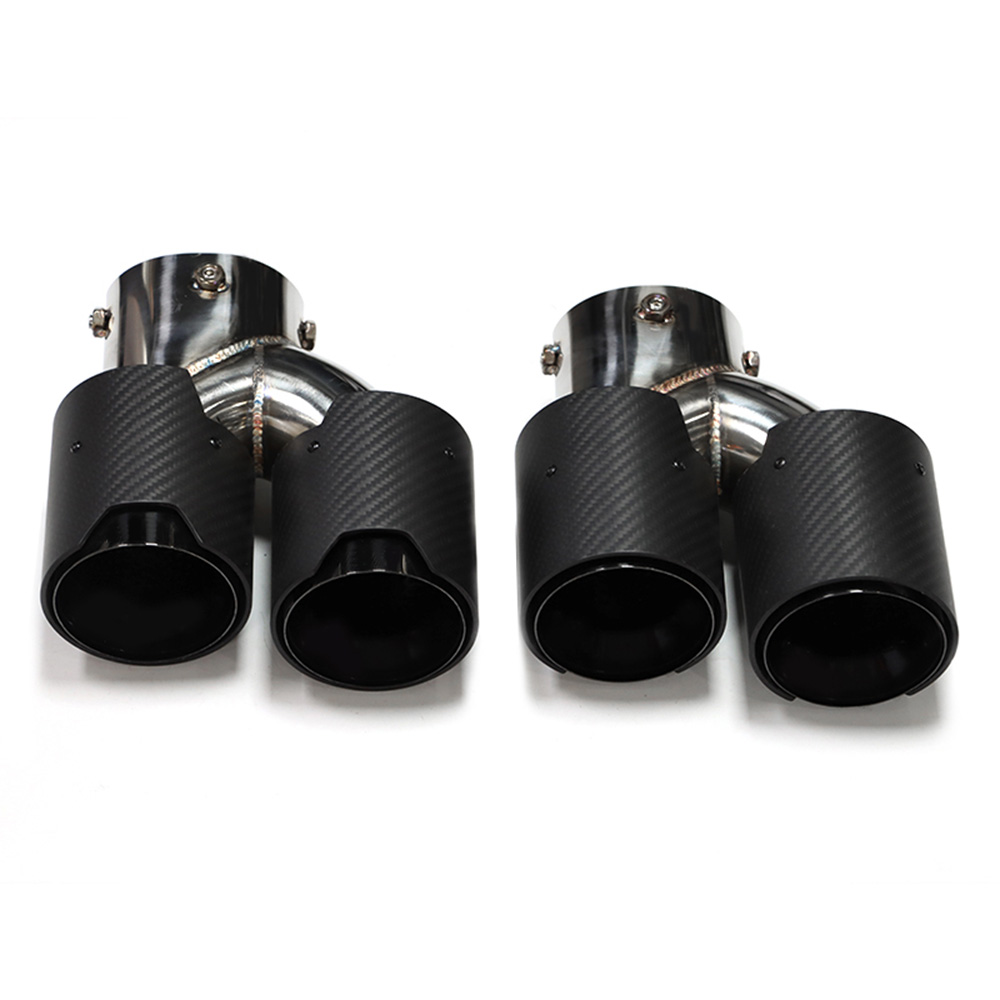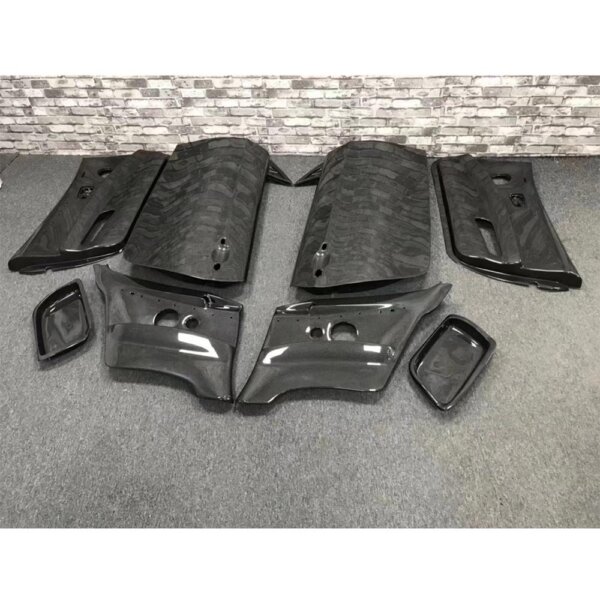Is Carbon Fiber Truly Waterproof? Your Complete Guide (Myths vs. Facts)
When people see carbon fiber — that dark, hypnotic weave — they think of speed, strength, and technology. But here’s a question that surprises many first-time buyers: Can this high-tech material actually survive water? Whether you’re designing a carbon fibre boat hull, tuning a supercar diffuser, or simply admiring a carbon fibre bicycle frame in the rain — this question matters more than you think.
Let’s dive deeper — not just into carbon fibre waterproofing, but into the soul of the material itself: how it breathes, resists, and endures in the world’s harshest elements. If you’re comparing options for a real project, speaking with an experienced tillverkare av kolkomposit can save you from costly mistakes early.
Viktiga slutsatser
- Carbon fiber is waterproof — the graphite filaments themselves don’t absorb water.
- Men den hartsmatris that binds them decides how a carbon fiber composite reacts to long-term moisture, salt, and UV.
- Autoclave curing, vacuum infusion, and marine-grade epoxy are the trinity of transforming carbon fiber into a truly waterproof composite.
- Proper coating, maintenance, and sealing techniques ensure decades of corrosion resistance, even in boats or undersea structures.
- In the wrong hands, however, even the most beautiful carbon weave can hide micro-cracks, moisture ingress, and structural fatigue.
Understanding Carbon Fiber and Its Composite Nature
What Carbon Fiber Is Made Of
Carbon fiber isn’t born waterproof. It’s engineered — from organic polymers like polyacrylonitrile (PAN), undergoing a precise series of high-temperature treatments (carbonization and graphitization) to transform into incredibly fine, crystalline graphite filaments.
These filaments, when woven into carbon fibre cloth, are dry, light, and incredibly strong — but not yet sealed. Only when they meet a resin matrix, usually an epoxy, do they become the smooth, rigid carbon fibre reinforced polymer (CFRP) we recognize.
The resin is what transforms the raw weave into armor — locking out water, air, and corrosion.
The Resin: Where Waterproofing Lives or Dies
The resin is the soul of the composite. It decides whether your carbon fibre marine application lasts a decade or delaminates after one rainy season.
A high-performance carbon fibre epoxy waterproof system works like glass around steel — transparent but powerful. If it’s mixed, cured, and sealed perfectly, the composite becomes a carbon fibre water barrier, capable of surviving years in the marine industry, aerospace, and outdoor exposure.
But if it’s rushed — too little resin, poor vacuum infusion, or uneven heating — the result is porosity. And porosity is the silent killer of waterproofing. It’s how moisture uptake begins, leading to micro-cracks, delamination, and carbon fibre composite repair nightmares later on. For buyers who need one-off or low-volume solutions, partnering with a anpassad kompositfabrik ensures the process control (void content, cure profiles, sealing) that true waterproofing demands.
Is Carbon Fiber Naturally Waterproof or Merely Water-Resistant?
Waterproof vs. Water-Resistant: The Subtle Truth
Carbon fiber itself is impermeable, but the composite is only as waterproof as its resin matrix and manufacturing precision. That’s why we distinguish between:
- Carbon fibre water resistance — repels rain, humidity, and splashes.
- Carbon fibre waterproofing — survives total immersion, pressure, and thermal cycling without degradation.
Brands like Toray Industries, Mitsubishi Chemical Carbon Fiber, and Hexcel Corporation design marine-grade prepregs specifically for carbon fibre composite durability in water. When properly cured, these materials meet ISO 12215 standards for carbon fibre structural applications underwater.
How Carbon Fiber Behaves in Real Water
Imagine a carbon fibre yacht slicing through a storm — the hull flexing against the sea’s rhythm. Every droplet tests the composite’s impermeability and resin bonding. Yet even after thousands of hours in salt spray, carbon fibre composite durability in marine conditions remains remarkable.
Because water doesn’t invade the carbon — it tests the human craftsmanship behind it.
That’s why carbon fibre kayak hulls, canoe shells, and yacht components made with vacuum-infused epoxy resin remain sealed composites, impervious to water ingress or chemical attack.
When Carbon Fiber Fails: What Happens Beneath the Shine
Porosity and Micro-Cracks
If a composite wasn’t cured under adequate pressure and temperature, microscopic voids may form. These tiny gaps become highways for moisture. Over time, carbon fibre composite water penetration and moisture absorption lead to whitening, blistering, and eventual delamination.
Galvanic Corrosion: When Carbon Meets Metal
In marine settings, carbon fibre galvanic corrosion can occur if aluminium or steel bolts contact exposed carbon without insulation. The saltwater acts as an electrolyte, creating a battery effect that rapidly corrodes the metal. The fix? Apply carbon fibre sealants for marine use or use non-conductive inserts.
UV and Thermal Fatigue
Under relentless sunlight and rain cycles, the surface resin expands and contracts. Without carbon fibre UV exposure water coatings, the outer layer may craze, dull, or develop micro-fissures. That’s why high-end manufacturers finish every surface with polyurethane or ceramic varnish — not just for looks, but for long-term waterproof protection.
How Manufacturers Achieve True Waterproofing
Autoclave and Vacuum Infusion: The Invisible Precision
In every carbon fibre prepreg fabrication wet environment, precision is life. Autoklavhärdning applies intense heat and pressure to remove air and excess resin, compressing the weave until porosity drops below 0.2%. Vakuuminfusion ensures resin fills every fiber gap — a critical step in carbon fibre composite waterproofing methods that we at Kina kolfiber have refined over years of supplying the marine industry.
It’s the difference between a carbon fibre composite for water sports equipment that lasts one season and one that lasts ten.
Surface Treatments and Protective Coatings
After curing, a surface treatment seals microscopic pores. Manufacturers may apply:
- Carbon fibre composite protective varnish
- Nano-ceramic water barrier coatings
- UV-stabilized polyurethane films
These layers transform a functional composite into waterproof carbon fibre fabric — resistant not just to water, but to chemicals, UV, and salt air.
Testing and Certification: Our Commitment to Verification
Top factories perform rigorous carbon fibre composite water resistance tests. In our own facility, we subject materials to:
- Carbon fibre composite puddle test (standing water exposure)
- Carbon fibre composite saturated strength (post-immersion tensile evaluation)
- ASTM D5528 delamination testing
- Extended salt spray and humidity cycling
This commitment is why our marine-grade components consistently achieve less than 0.5% water uptake in ASTM D570 tests, ensuring that beauty is backed by verifiable performance.
Why Waterproofing Matters in Automotive Carbon Fiber
Exterior Body Kits and Panels
Rain, road grime, and constant washing put exterior panels under moisture fatigue. Carbon fibre epoxy waterproof coatings protect car body kits and diffusers from water ingress through screw holes or edges. For application ideas and visual references across platforms, explore our curated kolfiberbilar hub before you spec your next kit.
Interior and Engine Bay Components
Inside, thermal cycling and condensation are real enemies. Using carbon fibre resin systems with high glass transition temperatures (Tg) prevents the fine white blooming seen on poorly sealed parts. A periodic carbon fibre composite maintenance water inspection ensures your interior stays flawless.
The Emotional Side: Design That Lasts
When we handcraft an engine cover or mirror cap, we’re not just chasing beauty. We’re sealing stories inside — hours of curing, sanding, and coating — to make something that won’t just shine, but endure. This philosophy is embedded in every layer, ensuring that the part you receive is a testament to both art and science.
Carbon Fiber in the Marine and Outdoor World
Marine Craft and Subsea Uses
From carbon fibre raft hull materials to submarine housings, the marine industry trusts CFRP because of one fact: Carbon fibre composite durability salt water is unmatched.
- Honeycomb core sandwich panels maintain stiffness with zero moisture ingress.
- Carbon fibre honeycomb core waterproofing techniques prevent blistering and fatigue.
- Underwater sensors and subsurface housings use carbon fibre composite subsurface water use technology for strength at depth.
Outdoor and Sporting Goods
The same resilience powers:
- Carbon fibre waterproof gear for kayaking and diving
- Carbon fibre outdoor furniture with waterproof panels that resist humidity
- Carbon fibre bicycle frame water proofing coatings for all-weather riders
These aren’t just luxury items — they’re a testament to human engineering facing nature and winning.
Maintenance: Keeping Carbon Fiber Waterproof For Life
Inspect Regularly
Even the strongest composites can fail if neglected. Check for:
- Edge cracks
- UV fading
- Loose fasteners allowing water ingress
Re-seal When Needed
Använda carbon fibre waterproofing agents or marine sealants when topcoats begin to dull. Polish with a ceramic coating every 6–12 months for carbon fibre composite dryness maintenance.
Avoid Low-Quality Laminates
Low-temperature “wet layups” may skip proper curing. They look identical at first — but once humidity enters, carbon fibre composite long-term water exposure reveals the difference in the form of bubbles, whitening, and soft spots. If you need one-off race parts, small-batch prototypes, or bespoke geometry, commissioning anpassad kolfiber parts is often the safest path to guarantee sealing and durability from day one.
Carbon Fiber vs. Fiberglass: Who Wins in Water?
| Egendom | Kolfiber | Glasfiber |
|---|---|---|
| Water Absorption | <0.5% (with proper resin) | Up to 1–2% |
| Motståndskraft mot korrosion | Excellent | Bra |
| UV-beständighet | Hög (with coating) | Medium |
| Styrka till vikt | 10× higher än glasfiber | Måttlig |
| Salt Spray Durability | Utestående | Rättvis |
| Long-Term Maintenance | Minimal | Regular resealing often required |
| Kosta | Högre | Lägre |
Fiberglass can perform well in budget-conscious applications — but it can’t match the carbon fibre composite waterproof vs composite performance when fatigue life, chemical resistance, and dimensional stability matter most.
Chemical and Environmental Endurance
Carbon fibre’s inherent chemical resistance makes it nearly impervious to acids, alkalis, and saltwater corrosion. Its graphite lattice won’t rust or oxidize — ever. That’s why it’s the preferred material for carbon fibre composite undersea sensors and marine industry hulls.
Its weather resistance is equally powerful: Even under carbon fibre outdoor exposure, thermal cycling, or UV radiation, a coated composite remains visually flawless and mechanically sound for decades.
Conclusion — The Poetry of Permanence
At Chinacarbonfibers, we’ve seen carbon fiber live through storms — literal and industrial. We’ve submerged parts for months, left panels on rooftops through monsoon seasons, and seen them emerge unchanged — black, gleaming, defiant.
Carbon fiber is waterproof. But more than that — it’s proof that when science meets precision, beauty becomes endurance.
A carbon fibre composite is more than a material. It’s a promise sealed in resin and time — a story of pressure, fire, and perfection. And that’s why every curve, every weave, every shimmer of light across its surface reminds us that great engineering doesn’t just resist nature — it partners with it.
Ready to Experience Uncompromising Performance?
The difference between a carbon fiber part that looks good and one that truly endures lies in the details of its creation. Let’s discuss how our waterproof carbon fiber solutions can bring reliability and beauty to your next project — or browse our site to engage a proven tillverkare av kolkomposit team that can take you from design to production with confidence.




